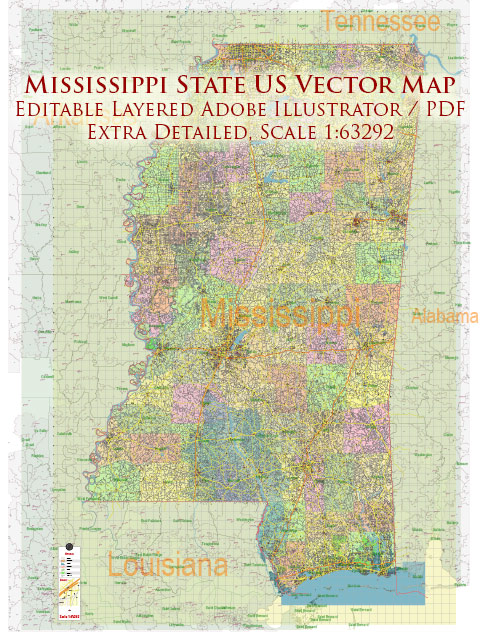Mississippi, like many other states, has a rich history of urban development that spans centuries. The state’s urban development can be traced through key historical periods, economic shifts, and demographic changes. Here is a brief overview of Mississippi’s urban development history:
- Native American Settlements: Before European colonization, various Native American tribes inhabited the region that is now Mississippi. These indigenous peoples established settlements along rivers and other strategic locations, engaging in agriculture and trade.
- Colonial Era: The area that is now Mississippi was initially explored by the Spanish and later claimed by the French. The city of Natchez, founded by the French in 1716, became an important colonial settlement. During this period, urban development was influenced by European colonial architecture and planning.
- Antebellum Period and Plantation Economy: In the 19th century, Mississippi’s economy relied heavily on cotton cultivation and the plantation system. Cities such as Jackson, Vicksburg, and Natchez grew as economic and political centers. The antebellum architecture in these cities reflects the prosperity of the planter class during this era.
- Civil War and Reconstruction: The Civil War had a profound impact on Mississippi’s urban areas, especially Vicksburg, which was a key battleground. The post-war Reconstruction period brought challenges and changes to the state, including efforts to rebuild and redefine urban centers.
- Industrialization and Railroad Expansion: In the late 19th and early 20th centuries, Mississippi underwent industrialization, and urban areas saw growth with the expansion of railroads. Cities like Meridian and Hattiesburg developed as transportation hubs, facilitating the movement of goods and people.
- Great Migration and Urbanization: The Great Migration, during the early to mid-20th century, led to an influx of African Americans into urban areas, particularly in the Delta region. Cities like Jackson experienced demographic shifts and increased cultural diversity.
- Civil Rights Movement: Mississippi played a significant role in the Civil Rights Movement of the 1950s and 1960s. Cities like Jackson and Biloxi were sites of activism and struggle for racial equality, leading to important social and political changes.
- Post-Industrial Era: Like many other states, Mississippi experienced deindustrialization and suburbanization in the latter half of the 20th century. This had implications for the development of urban areas, with some cities facing economic challenges and population shifts.
- Contemporary Urban Development: In recent decades, Mississippi’s urban areas have witnessed efforts at revitalization, downtown redevelopment, and the promotion of cultural amenities. Cities like Jackson, Gulfport, and Oxford have seen ongoing urban development projects aimed at enhancing economic growth and quality of life.
Understanding Mississippi’s history of urban development involves considering its complex interplay of economic, social, and political factors over time. The state’s cities have evolved in response to changing circumstances, leaving a diverse urban landscape that reflects both historical continuity and adaptation to new challenges.


 Author: Kirill Shrayber, Ph.D.
Author: Kirill Shrayber, Ph.D.